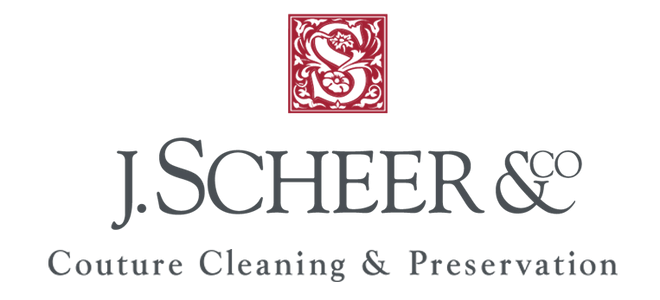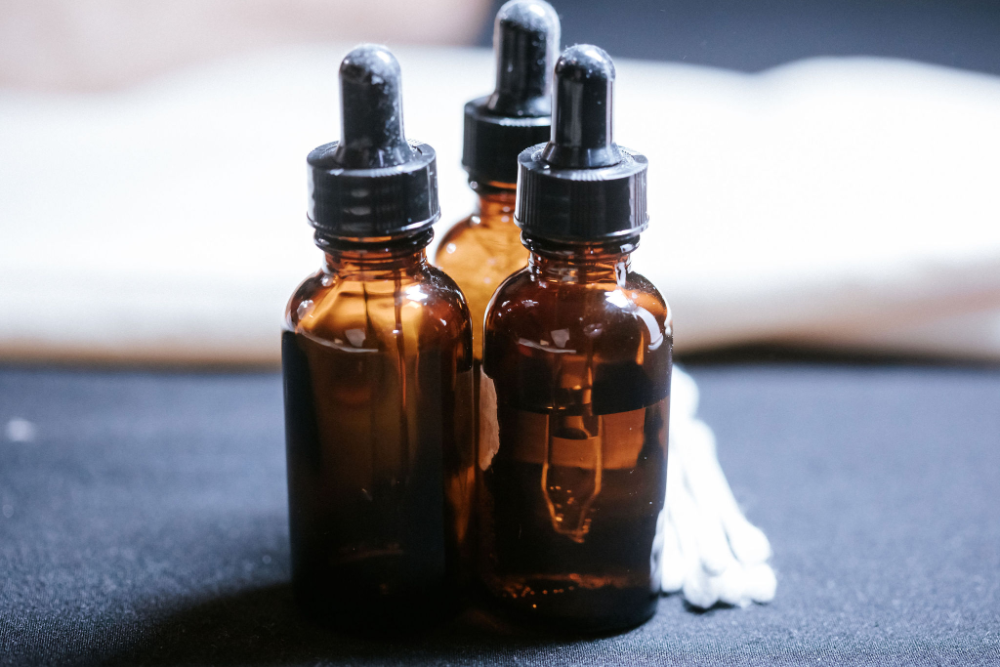At J. Scheer & Co, with our conservation science background and experience in museum environments, we prioritize employing strategies and solutions that utilize the most effective practices and materials for safe long-term storage of delicate garments. While researching for the right business to preserve your couture garments or bridal gown, it is important to consider the training of those handling your gown and the materials they use for preservation. We are here to help you better understand why we use certified acid-free materials and what it means when others promote the use of “acid-neutral” materials as “museum quality”.
What is museum quality?
This term can be difficult to define and sometimes it is used interchangeably with archival quality or erroneously to suggest conservation quality. There are important differences depending on who you ask. Museum conservators have to factor in how long storage materials will last, how the materials will impact what is being stored, and the budget of the institution. There are pros and cons to all materials on the market and they are not one size fits all. When used in an institutional setting, “museum quality” refers to storage materials that are pure or virgin (not recycled materials) and offer permanent chemical stability for the object going into storage. We subscribe to this definition and apply it when sourcing acid-free conservation-grade storage materials for our clients.
What is the ideal environment for textile storage?
Conservation scientists generally recommend that textiles be stored away from light sources in controlled climates with a temperature of 60-70 º F and 40-60% relative humidity (RH) 40-60%. If the environment is not properly maintained it can lead to fluctuations in temperature and RH and can cause damage to the textile fibers. Incorrect storage can lead to mold or pest infestations, and higher temperatures can cause chemical reactions to occur causing damage. Light can cause yellowing, dye fading, and embrittlement, this type of damage can be difficult or impossible to reverse. The protective materials used are just as important at the storage environment. Textile conservators recommend that textiles not be sealed and materials should be non-buffered and acid-free. If fabrics like linen or cotton are used to support and protect a textile in storage, they should be desized and prewashed.
What are acid-free materials?
Acid-free materials, such as tissue or corrugated board (preservation box), have been pretreated through a chemical process. During this process, the acidity and lignins are completely eliminated from the product. The treatment is permanent making acid free materials ideal for long term textile storage.
What are acid-neutral materials?
Acid neutral means that the product has undergone a treatment that neutralizes the natural acidity of the material in question. This delays reacidification and is a temporary treatment that utilizes measures such as buffering agents to create a neutral material. Acid-neutral materials used for textile storage are not permanently acid-free.
What are buffering agents?
Buffering agents can be used as masking agents to help acidic materials (tissue paper, cardboard) achieve a neutral pH of 7. They are often made up of weak acids or weak bases that counteract the natural pH of a material in order to raise or lower the pH. A common buffering agent for tissue is calcium carbonate (chalk) which raises the pH level so that the tissue is more alkaline (alkaline = basic). Thus the term “acid neutral”.
How do buffering agents impact the storage environment?
Archival materials with buffering agents are used to prevent the acceleration of acidic conditions. However, over time the pH of these “acid neutral” materials changes as they are exposed to migrate acids from other materials that are wrapped in the tissue or nearby in storage. While acid-neutral buffered products can generally be safe for certain types of cellulosic material, they are never suggested by conservation scientists for the storage of protein-based fibers (silk, wool, feathers, pearls, etc). In the case of reacidification, the textile can more quickly oxidized leading to yellowing and discoloration from age and poor storage. Additionally, the residue left behind from buffering agents on acid-neutral tissues can transfer unevenly onto the surface of textiles while stored. If this occurs, it can result in uneven aging and damage over time.
Do acid-neutral materials eliminate lignins and why does this matter?
Acid-neutral materials still have lignins present; they are not removed during manufacturer treatment. Lignins are organic polymers that make up the cell walls of plants. These polymers assist with the overall strength of plants i.e. wood pulp. If left intact, lignins will become acidic. This heavily contributes to the yellowing and discoloration of fabrics over time especially when the tissue is introduced to air and exposed to light. These conditions also cause the paper or tissue to become brittle and no longer functional as a source of protection from dust or outside elements. If the degradation of the materials is not caught in time, it will lead to a discolored and brittle garment.
Are acid-neutral materials stable for housing textiles?
The short answer is no! The buffering agents in acid-neutral materials degrade over time. This impacts their ability to neutralize acidity and maintain a stable long-term storage environment for textiles. Using acid-neutral materials requires consistent monitoring and replacing. This makes them ill-suited as materials used in museum storage. Museum professionals are already constantly monitoring temperature, relative humidity, and for pest activity. Frequently changing tissue is less than desirable when dealing with a large collection. Some institutions may opt for acid-neutral materials as they tend to be cheaper but doing so requires regular repurchasing and can negatively impact textiles over time.
Are acid-neutral materials museum quality?
While you can source acid-neutral materials from online archival vendors, they are a temporary solution to a problem that requires long term planning. Acid-neutral materials cannot achieve a permanently stable environment for textile storage. This can be especially problematic for at home storage which cannot fully mimic the highly controlled environments that museum spaces can achieve. The permanent qualities of acid-free tissue make it a more effective material for long-term home storage that mirrors that of a museum environment. Our goal is to not disturb the inherent pH of the textile after treatment which is why we only use certified acid-free materials. We want to maintain stability in the textile and the materials used for preservation. Acid-free tissue makes this goal possible.
© 2024 J. Scheer & Co., Inc. All Rights Reserved

